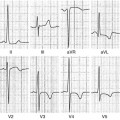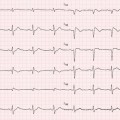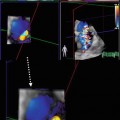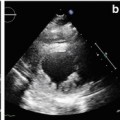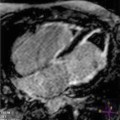© Springer International Publishing Switzerland 2014
Bruno Pinamonti and Gianfranco Sinagra (eds.)Clinical Echocardiography and Other Imaging Techniques in Cardiomyopathies10.1007/978-3-319-06019-4_88. Dilated Cardiomyopathy: Usefulness of Imaging in Prognostic Stratification and Choice of Treatment
Marco Merlo1 , Francesco Negri1 , Davide Stolfo1 , Anita Iorio1 , Bruno Pinamonti1 , Massimo Zecchin1 , Laura Vitali Serdoz1 and Andrea Di Lenarda2
(1)
Department of Cardiology, University Hospital of Trieste, via P. Valdoni 7, Trieste, 34139, Italy
(2)
Cardiovascular Center, Azienda per i Servizi Sanitari n°1 di Trieste, Via Slataper 9, Trieste, 34100, Italy
8.1 Introduction
The role of imaging in prognostic stratification of idiopathic dilated cardiomyopathy (DCM), due to the rarity of this pathology, has some problems. In particular, difficult therapeutic choices in clinical practice, (i.e., heart transplantation or implantable device therapy), which mainly depend on prognostic stratification, are often based on clinical trials assessing patients with heart failure (HF), due to multiple etiologies (mostly ischemic) or retrospective studies on small populations, which have subsequent limitations. Nevertheless, idiopathic DCM patient profiles are somehow different from those in patients who present with secondary forms of DCM (i.e. ischemic, hypertensive, or valvular heart disease), because idiopathic DCM is usually found in younger people with fewer comorbidities. Echocardiography and cardiac magnetic resonance (CMR) represent useful imaging techniques for prognostic assessment of DCM.
Besides imaging tools, it must be noted that some functional tests, such as cardiopulmonary exercise test, or other nonimaging tests, such as T-wave alternans, QT dynamicity, as well as genetic characterization, can be prognostically helpful in selected scenarios, such as arrhythmic risk stratification, especially in the early phases of DCM, which remains a critical issue for the cardiologic community, as sudden death (SD) accounts for 30–40 % of all idiopathic DCM deaths. However, these variables are not yet validated in randomized prospective clinical trials. Considerations such as these, connected to the generally young age of patients and to their family history, make this issue very important and difficult for cardiologists. That is why it is often better to refer patients to tertiary care centers for diagnostic–therapeutic assessment and prognostic stratification of cardiomyopathies (CMP).
8.2 Echocardiography and Prognosis
8.2.1 Left Ventricular Dimensions and Systolic Dysfunction
Quantitative assessment of left ventricular (LV) dimensions and systolic function has a particular relevance in the long-term follow-up of DCM patients for assessing disease progression or response to treatment. LV ejection fraction (EF) emerged as the only instrumental baseline parameter that could predict SD in the long term, which confirms its known role in this specific field [1]. The presence of markedly dilated LV (end-diastolic LV diameter ≥38 mm/m2) associated with severely depressed EF is a predictor for SD if evaluated within 1 year before the event. These two parameters probably identify a subgroup of patients with a very advanced and severe disease characterized by predicting a higher risk of SD [2].
Notably, implanted cardiac defibrillator (ICD) implantation emerged as the only therapy with an independent protective role against SD [1]. Since publication of the Sudden Cardiac Death in Heart Failure (SCD-HeFT) and Defibrillators in Non-Ischemic Cardiomyopathy Treatment Evaluation (DEFINITE) trials [3, 4] ICD indication for primary prevention of SD has been extended to patients affected by DCM presenting LVEF ≤0.35 and New York Heart Association (NYHA) functional classes II or III (class I indication, level of evidence B) [5], despite ≥3 months of optimal pharmacological therapy. However, it is not clear whether a longer interval could modify the proportion of patients who are candidates for ICD. In clinical practice, timing of ICD implantation for primary prevention remains a critical and very common issue [6], particularly in idiopathic DCM [5].
In this sense, the Canadian Cardiovascular Society recommended a different timing in ICD therapy, depending on the etiology of heart failure (HF). Patients with nonischemic DCM with EF ≤0.35 and NYHA functional classes II or III are recommended for an ICD after at least 9 months of optimal medical therapy (strong recommendation, high-quality evidence), whereas in patients with ischemic DCM, ICD therapy is recommended after only ≥3 months of optimal medical therapy [7]. However, the risk of waiting before implanting an ICD is not specified. In clinical practice, there is often the attitude not to delay implantation for too long, especially when cardiac resynchronization is required. In patients with a high probability of improvement, ICD implantation could be safely delayed [8].
This issue remains a challenge for the cardiologist community; in fact, according to recent evidence, even in patients considered at very high risk (i.e., those presenting with important enlargement of LV dimensions and very severe LV systolic dysfunction), the probability of maintaining ICD indications after optimization of medical treatment, or SD in the meantime, was only 40 %, even in more impaired patients (unpublished data). Therefore, early ICD implantation should not be generally recommended in the majority of cases but should at least be considered a closer follow-up (i.e., 3 or 4 weeks) in patients who will less likely improve after baseline evaluation. The need of further parameters, useful in arrhythmic stratification, clearly emerges regardless of LVEF. In this sense, only a few reports provided by retrospective studies are available, such as those assessing the presence of nonsustained ventricular tachycardia (VT) during Holter monitoring in patients with moderate systolic dysfunction [9] or T-wave alternans [10].
8.2.2 Left Ventricular Reverse Remodeling
Several studies have demonstrated the importance of echocardiography for re-evaluating patients after an appropriate follow-up under optimal medical treatment. A study by our group [11] (361 patients consecutively enrolled in a cohort of idiopathic DCM) emphasizes the importance of considering both clinical and laboratory data at baseline and during follow-up to improve prognostic stratification of idiopathic DCM patients. In that study, LV reverse remodeling characterized about one third of the entire cohort alive at midterm follow-up. Those patients received tailored pharmacological treatment, and the condition emerged as an independent predictor of long-term prognosis. Therefore, evolution to LV reverse remodeling suggests less structural cardiac damage at diagnosis and a higher probability of better response to treatment [11].
8.2.3 Diastolic Dysfunction
Conventional echo Doppler assessment of LV diastolic dysfunction (transmitral filling pattern) provides important diagnostic and prognostic information in patients with idiopathic DCM. To fully define the category of diastolic dysfunction, it is important to include methods such as tissue Doppler analysis (TDI) of the mitral annulus (E’ velocity), pulsed-wave Doppler of pulmonary venous inflow, and left atrial (LA) size.
Stay updated, free articles. Join our Telegram channel

Full access? Get Clinical Tree


